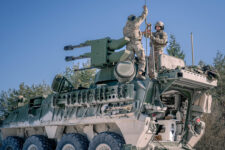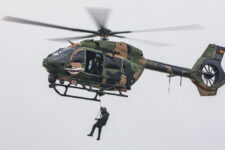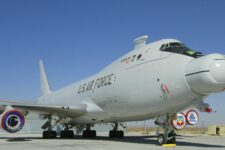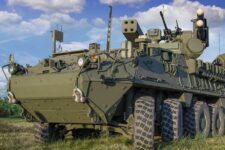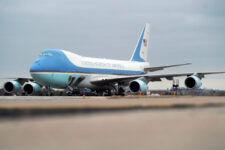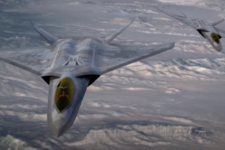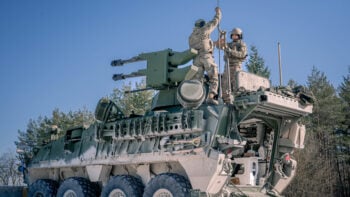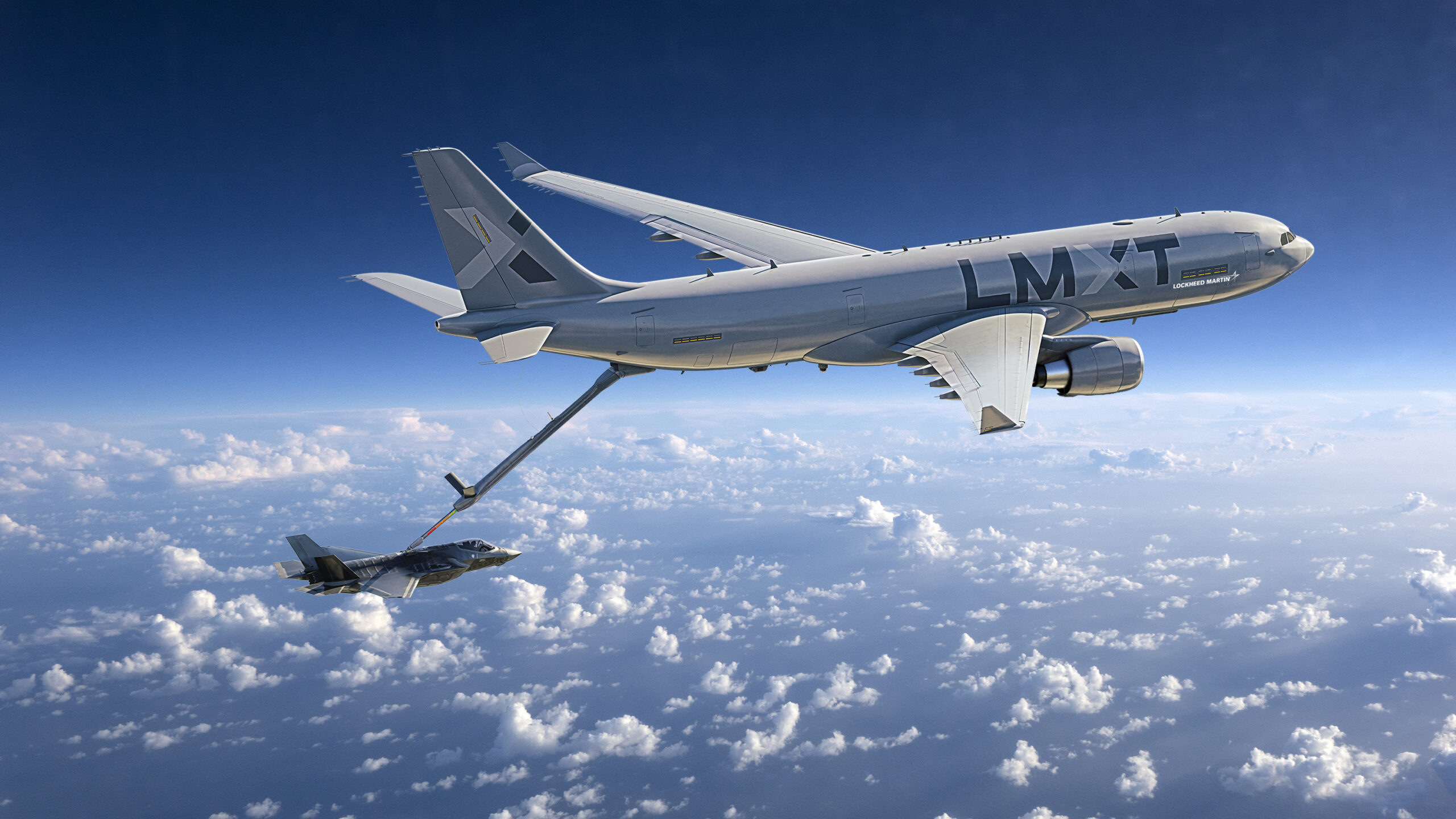
Concept art of an LMXT with GE CF6 engines refueling an F-35. (Lockheed Martin)
UPDATED 10/23/2023 at 2:37pm ET with a new statement from Airbus.
WASHINGTON — Lockheed Martin has decided not to pursue an Air Force program to recapitalize the service’s aging tanker fleet, the company said today, in what analysts said could boost rival Boeing for a high-profile contract.
“Lockheed Martin has decided not to respond to the U.S. Air Force’s KC-135 fleet recapitalization Request for Information (RFI),” Lockheed spokeswoman Stephanie Stinn told Breaking Defense in a statement.
“We are transitioning Lockheed Martin’s LMXT team and resources to new opportunities and priority programs within Lockheed Martin, including development of aerial refueling solutions in support of the U.S. Air Force’s Next-Generation Air-Refueling System (NGAS) initiative. We remain committed to the accelerated delivery of advanced capabilities that strengthen the U.S. Air Force’s aerial refueling missions,” she added.
Lockheed was partnered with Airbus on the recap effort, offering a modified version of that company’s A330 Multi Role Tanker Transport aircraft known as the LMXT. Reuters first reported Lockheed’s withdrawal.
In a statement today, Airbus said it still planned to “formally respond” to the Air Force’s recapitalization request for information (RFI).
“Airbus remains committed to providing the U.S. Air Force and our warfighters with the most modern and capable tanker on the market […],” the company said. “The A330 U.S.-MRTT is a reliable choice for the U.S. Air Force: one that will deliver affordability, proven performance and unmatched capabilities.”
Lockheed, the world’s largest defense contractor, officially unveiled its LMXT offering with Airbus in 2021, a candidate for what was then the Air Force’s KC-Y program. In the time since, the Air Force has abandoned the KC-Y strategy, recasting it as the KC-135 Tanker Recapitalization Program, alongside calls from lawmakers to keep a competition on the table.
Air Force acquisition chief Andrew Hunter described the service’s new effort as having more modest requirements for an estimated fleet of 75 new tankers, and hinted the service was leaning toward Boeing’s incumbent KC-46A Pegasus as the likely answer to provide interim capability before a next-gen refueler would come online in the mid-2030s. But other service officials have since emphasized that no decisions had been formally made.
Since the Air Force’s new recapitalization approach was announced this spring, Lockheed gave little indication it was contemplating withdrawing from consideration, partnering with GE Aerospace to provide the LMXT’s engines and showcasing its offering at venues like the Paris Air Show in partnership with Airbus.
Lockheed officials, however, have suggested their business case for the recapitalization may not make sense for a relatively small fleet of 75 aircraft. The company’s aeronautics division chief, Greg Ulmer, told Defense One in June that the contractor needed the Air Force to buy at least 110 new tankers.
“At some level, it’s surprising that they decided to proactively retire from the potential competition. But I think it reflects sort of astute decision making to safeguard their IRAD [internal research and development] funding,” Tim Walton, an air refueling expert at the Hudson Institute, told Breaking Defense today. That funding could instead be shifted toward NGAS efforts that the company now says it’s focused on.
Walton said Lockheed’s offering faced three main challenges. The first was the simple fact that the Air Force is already using Boeing’s KC-46 to replace some KC-135s, meaning the LMXT would face a bigger challenge for considerations like training and support infrastructure, especially when combined with a “proposed small buy of 75 more aircraft.” The second was what he said was the relatively lower cost of a KC-46. And finally, “in general, the Air Force seemed less interested in introducing a new type of aircraft into its mobility portfolio that was based off of existing commercial aircraft as compared to looking towards the future.”
The Air Force still has yet to formally decide to hold a KC-135 recapitalization competition, and Walton said Lockheed’s withdrawal may make it “even easier” for the service to go with Boeing’s Pegasus offering.
If there is a competition, Boeing likely has the advantage, Walton said. Before Airbus’s statement today, he told Breaking Defense he “wouldn’t be surprised” if Airbus continues to pursue the recap race alone, if only to induce Boeing to make their offering to the Air Force more competitive and cut into Boeing’s potential profits.
For Boeing, Lockheed’s exit is likely to be welcome news. Boeing now looks poised to extend the longevity of its KC-46 line whose fixed-price contract has forced the plane maker to absorb over $7 billion in losses as the company wrings out lingering developmental woes. Boeing declined to comment.
“The economics of the Airbus/Lockheed Martin arrangement were always daunting, if not impossible. The KC-46 line was hot, and there was just one contractor,” Richard Aboulafia, managing director at AeroDynamic Advisory, told Breaking Defense in an email today. “When USAF made it clear that it was leaning towards extending KC-46 and then going straight to KC-Z, it left little room for hope,” he added. (KC-Z is the Air Force’s former name for the next phase of a tanker recap program, which was replaced by NGAS in the spring.)
Aboulafia said that Airbus is “doing great on the export tanker market” and as such “will likely continue to focus their efforts there.” As for Boeing, Lockheed’s exit from the tanker effort “gives Boeing a much better chance at recouping its enormous up-front losses on the KC-46 program.”
Red Cat unveils low-cost ‘family’ of small ISR, strike drones
The company revealed a new drone dubbed FANG and is championing a separate system the company is acquiring by buying manufacturer FlightWave Aerospace Systems.






